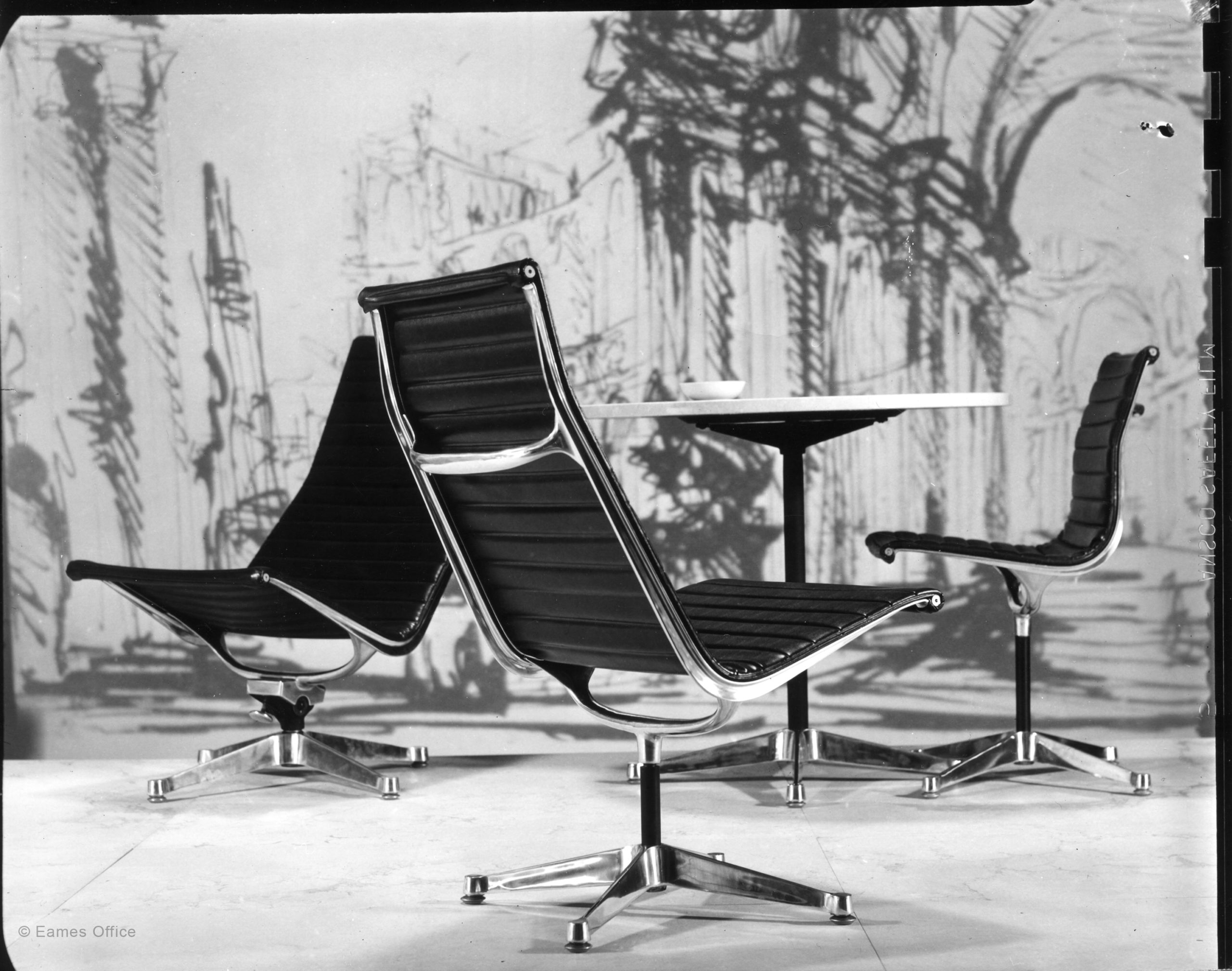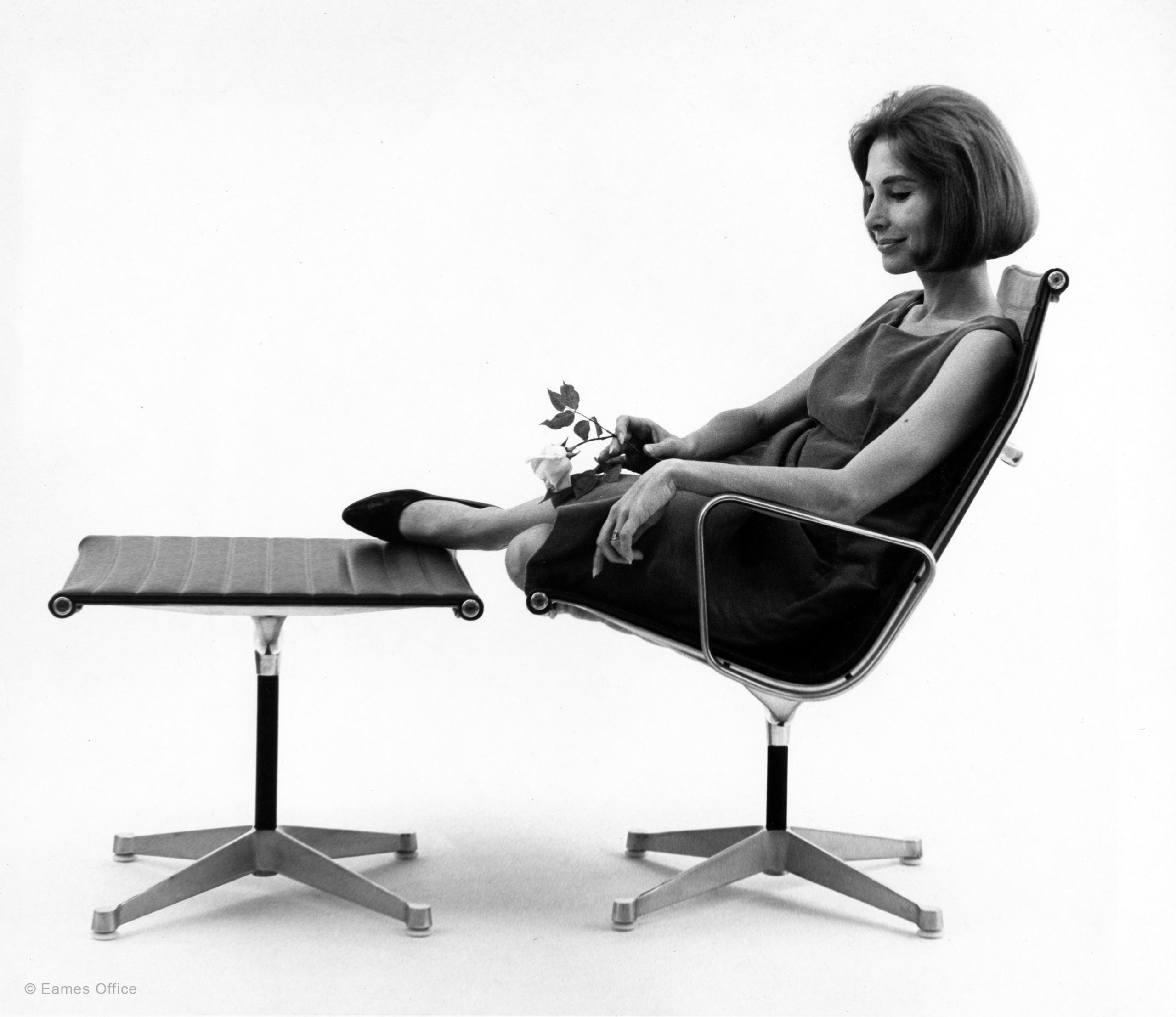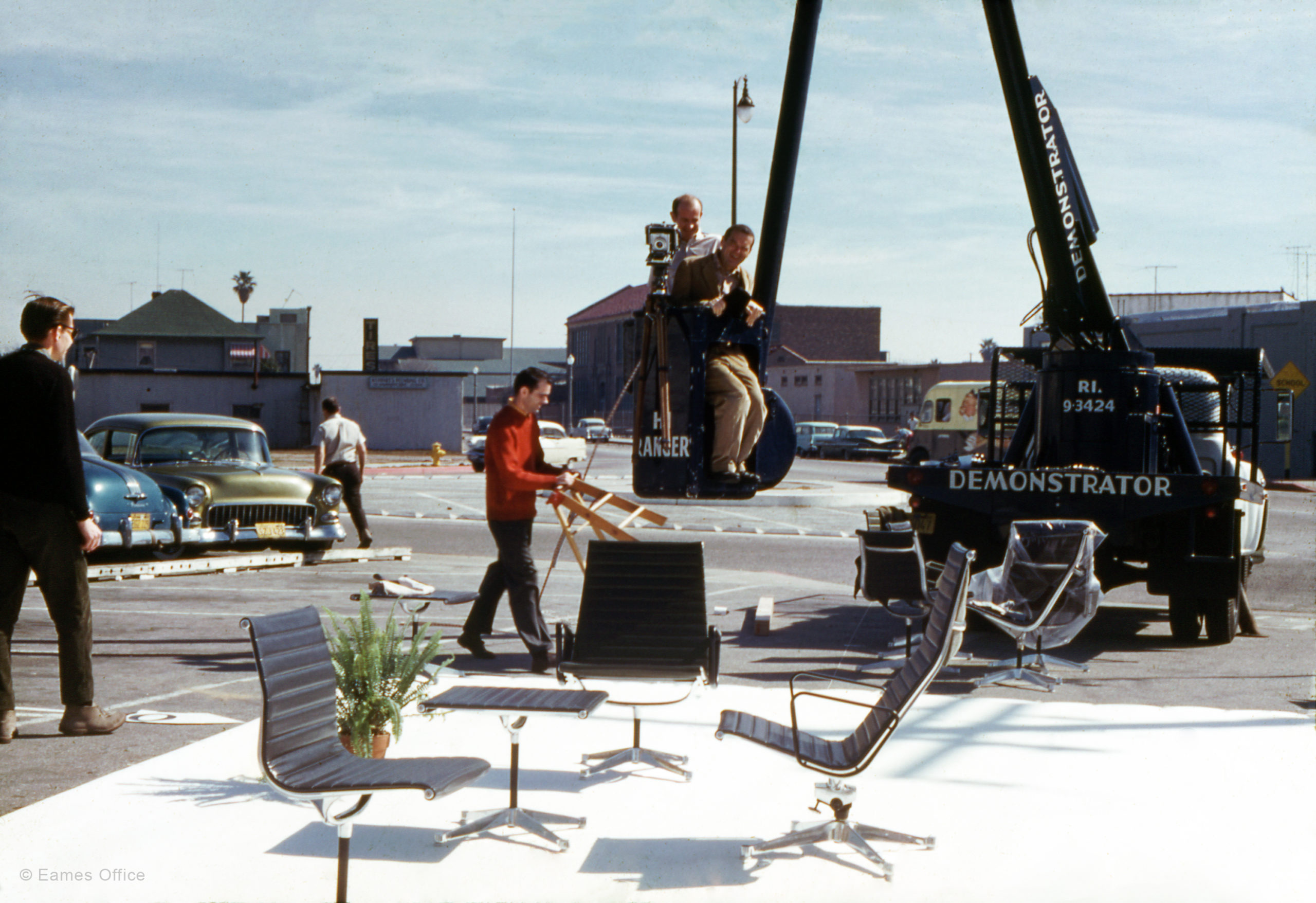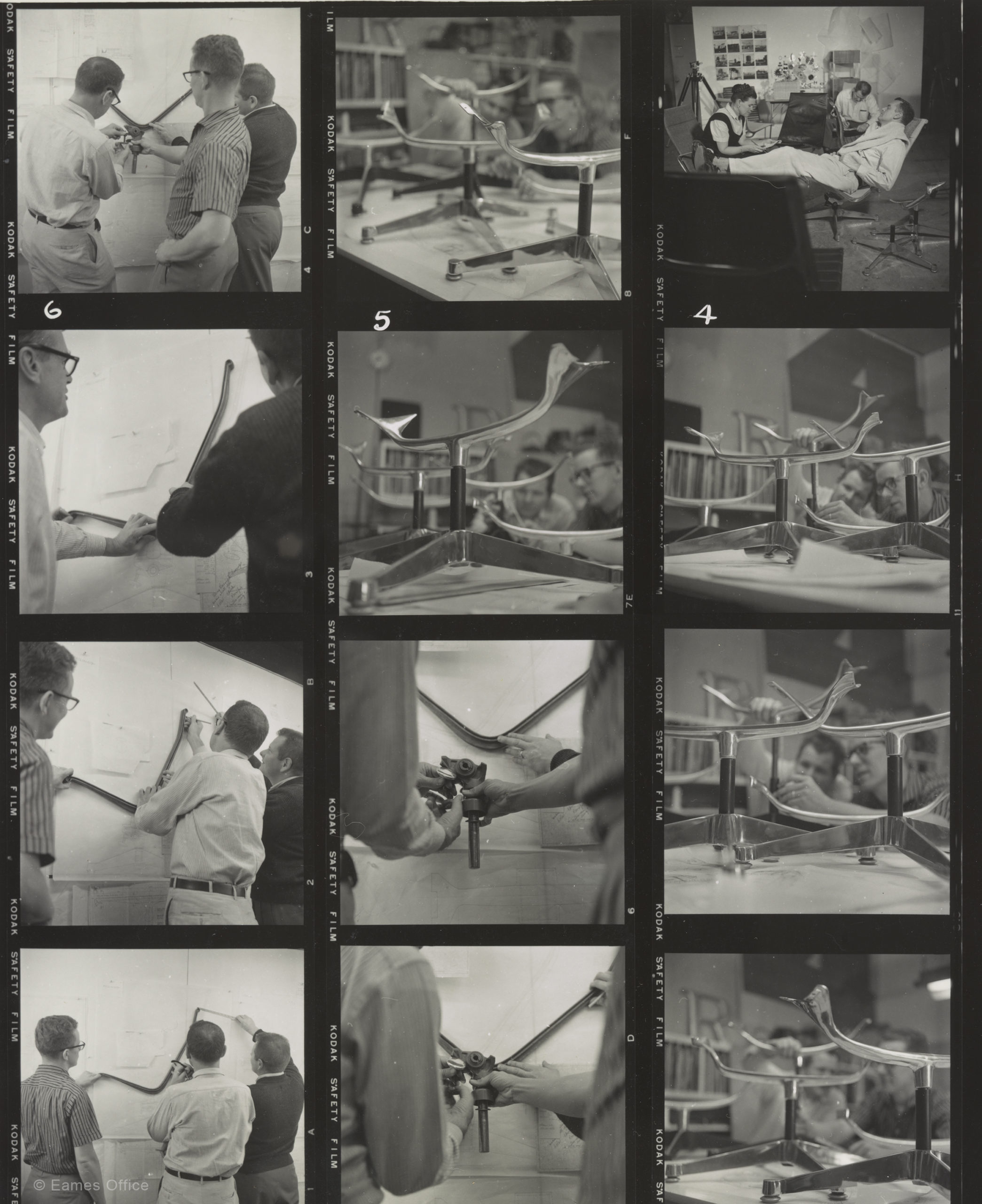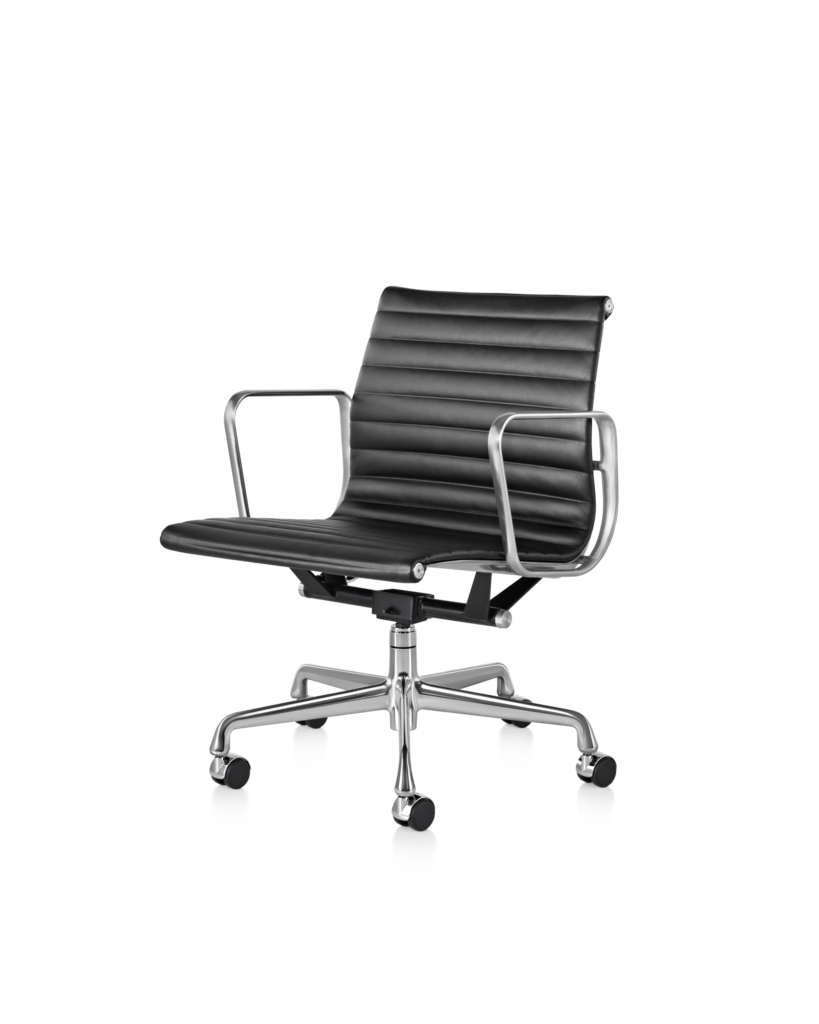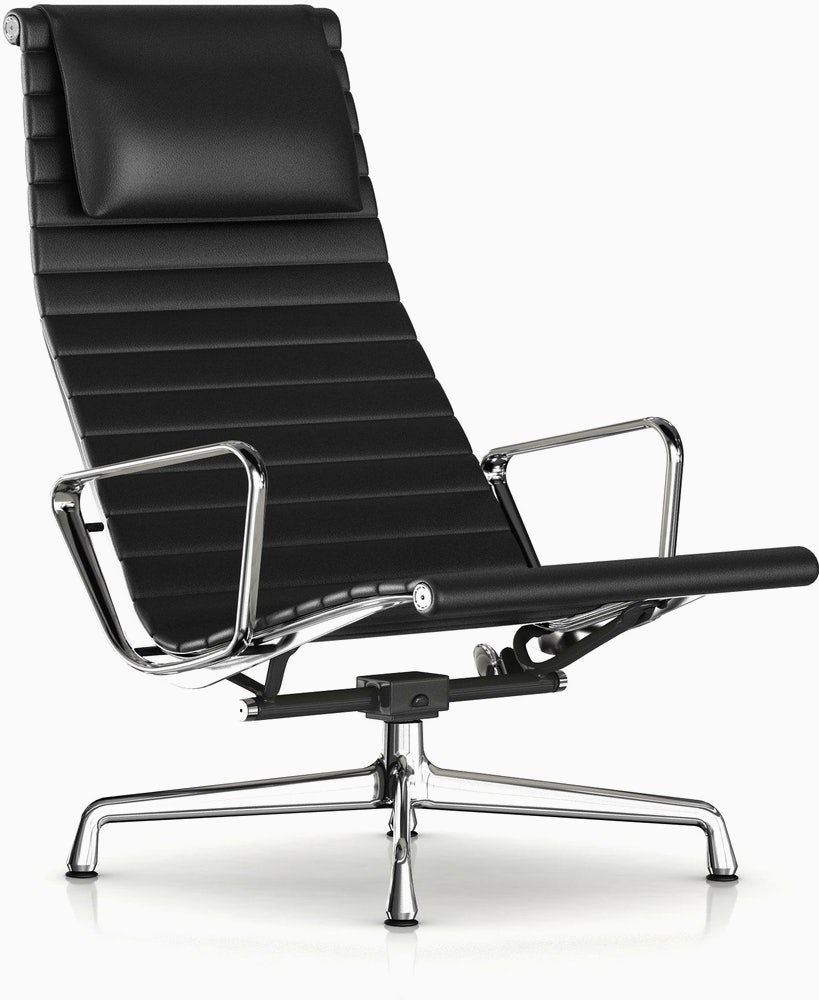Eames Aluminum Group
The Eames Aluminum Group’s design is relatively simple in that there are only two main elements, the one-piece seating pad, and the aluminum frame. This simplicity is owing to the Eames’ method of construction. The seating pad, or material covering of the chair, also serves as its supporting element. In this case, the covering consists of a core of ¼ inch vinyl foam covered with two layers of Fiberthin. These three layers are sandwiched between the exterior fabric, nilo, and are secured together into a single, integral unit by heat seals across the width at one and 7/8-inch intervals and by reinforced sewn edges. These processes make the unit firm and durable yet maintain flexibility. In addition, the heat sealing keeps the padding where it should be.
The second constructive element is the aluminum frame consisting of the base, the side, and back supporting elements and the arms. The pedestal base is made of horizontal blades radiating from a central column and curving downward at the ends to raise the frame from the floor. A glide of injection-molded natural nylon is heat tempered and then fitted into the hollow end of each leg. The column part of the base is a swivel mechanism consisting of a swivel shaft contained within a support column of cold-rolled, electrically welded steel tubing and finished in black enamel. The swivel shaft is one inch in diameter, and it is cast into the antlers-shaped element above it. The antlers piece extends upward and attaches on either side to the curved side supporting pieces. A back brace, shaped similarly to the antler part of the base, holds the two side supporting elements in position at the center back of the chair. Finally, the arms are attached to the side elements by heavy-duty screws, which are used throughout the chair.
The two main units, the seating pad and the frame are held together inventively and subtly. The pad is securely held in tension within channels of the side supporting elements. This tension is created by the expanding force characteristics of the antlers of the base and the back brace. At its four corners, the pad is further secured to the frame with screws and aluminum tee-washers. The method of assemblage aids the materials in the construction of a chair, which under normal usage, will not sag.
Charles Eames described the origins of the aluminum group and the design concept of assemblage: “This one started when Alexander Girard, Sandro, came to visit, and we were talking about furnishing a house which he and Eero (Saarinen) had just completed, a house marvelous in concept and superb in quality, and Sandro was bemoaning the fact that there was no real quality outdoor furniture that he could get for such a place—that is, the quality he wanted. You start on a close human scale. Here is a friend who has done something. He needs something for it, and you become involved. As we were trying to analyze the reasons why there was nothing available on the market to suit him, why we’re of course starting to write a program for designing the object to fill this void. That’s how it started.”
The public can visit this house today. It is known as the Miller House, located in Columbus, IN, and it is owned and operated by the Indianapolis Art Museum. On the day in 2015 that the Millers gave the house to the Indiana museum, the original Eames aluminum group chairs, situated there in 1958, were still providing great service to the Millers. Those original chairs are in the permanent collection of the Indianapolis Art Museum.
“The actual idea, the idea for the chair—that is, the gimmick, the device that made it possible is something I recall drawing on the back of an envelope. Like the beginning of an architectural solution, this one began with a cross section. It was in this full-sized doodle of a cross section less than two inches square that the whole framework of speculation could be built.”
Charles Eames
In addition to a design that accomplishes a lot with only two main elements, The Eames Aluminum Group seating designs offer upholstered comfort, including arm support, but are very light in weight. Charles and Ray Eames always paid attention to the weight-strength ratio; in this instance, they exceeded their high standards. In 1958, shoppers had an option of two types of armchair seating that would work in an executive’s office. Most upholstered armchairs of that era, made with either solid wood or solid steel frames, weighed 40 to 60 pounds. The comparable Eames Aluminum Group chair with arms weighed only 18 pounds, and unlike most upholstered armchairs, it pivoted.
We still make the Eames Aluminum Group, the same models that were available first in 1958. There’s a dining or desk chair, a lounge chair, a tilt-back lounge chair with an attached pillow, an executive height desk chair and an ottoman. Its development, as the first of the sling seating type designed by Charles and Ray Eames, led to the later groups built around the same principle– the Eames Soft Pad Group, Eames Tandem Sling Seating and the Eames Chaise.
In the 21st century, we’ve revisited the original concept for these chairs, which were first known as the “Indoor Outdoor Group.” When we brought out the “new” outdoor versions, we won a major prize as the best in outdoor seating, this for a design that was already five decades old by that point.
With the Eames Aluminum Group came a table base that was known as the “Eames Contract Base.” This was an evolutionary step for Charles and Ray, who had previously devised two earlier contract bases. The sturdy table bases for this group are made of rolled steel tubes fitted with cast aluminum bases. These sturdy pedestal base tables have a smaller footprint than most comparable tables, leaving ample room for sitters’ feet and surrounding chair legs while providing complete stability.
The Aluminum Group is still produced by Herman Miller and Vitra.
Explore Similar Works
Related Products
Browse a curated selection of Eames Office products we think you’ll love
